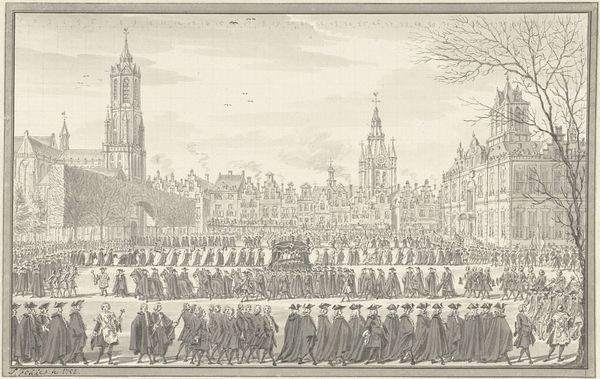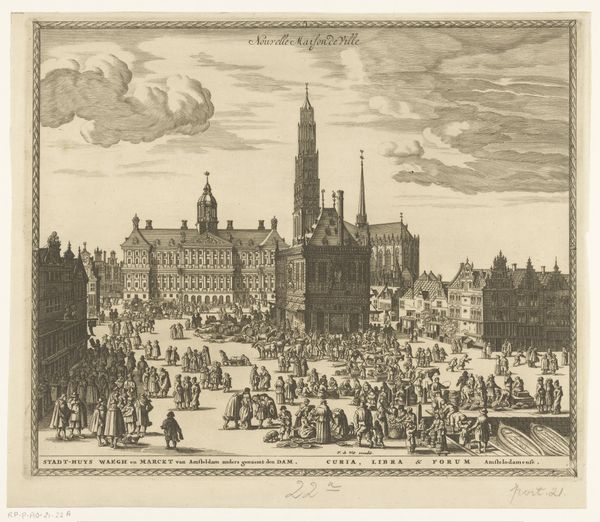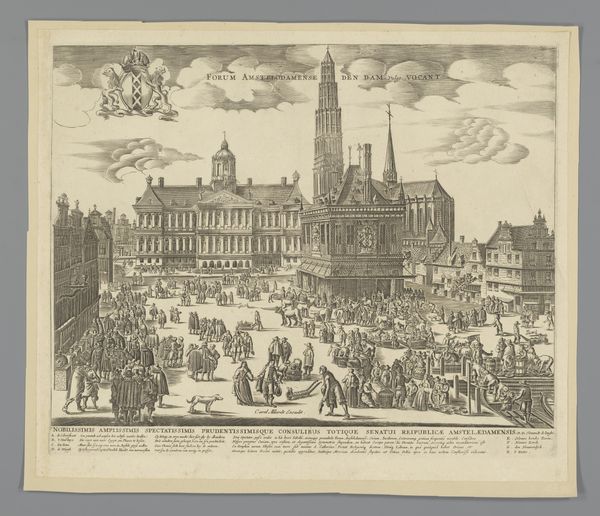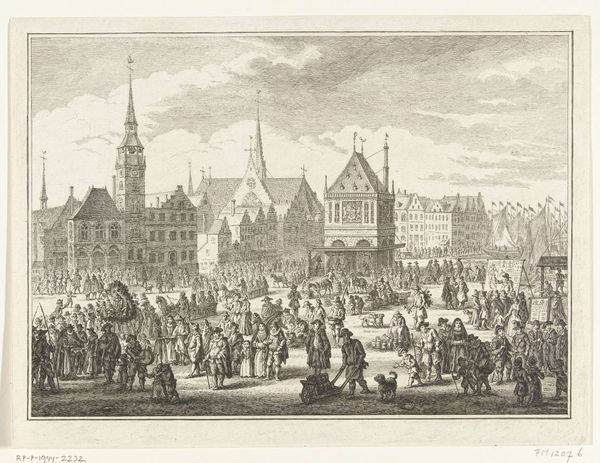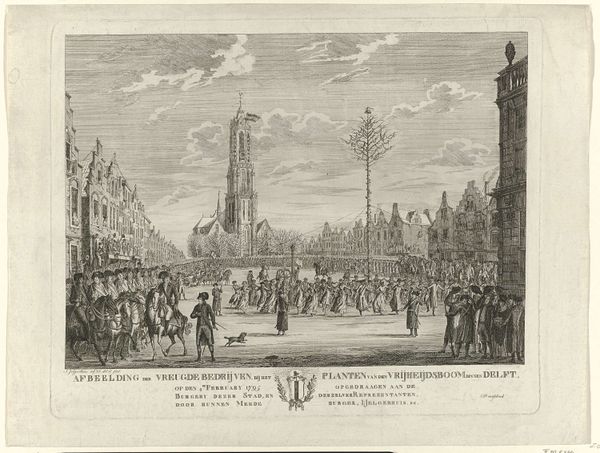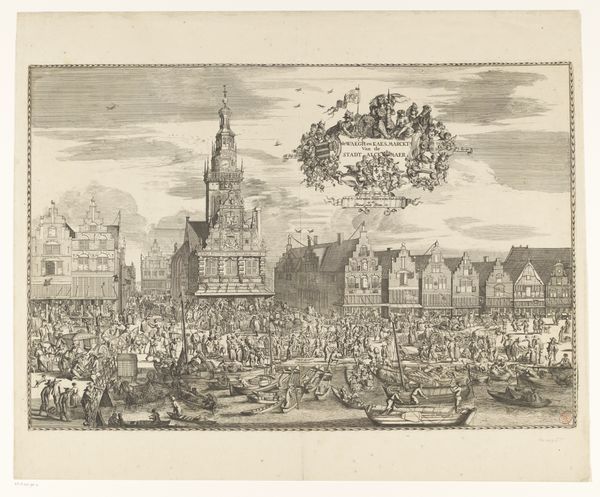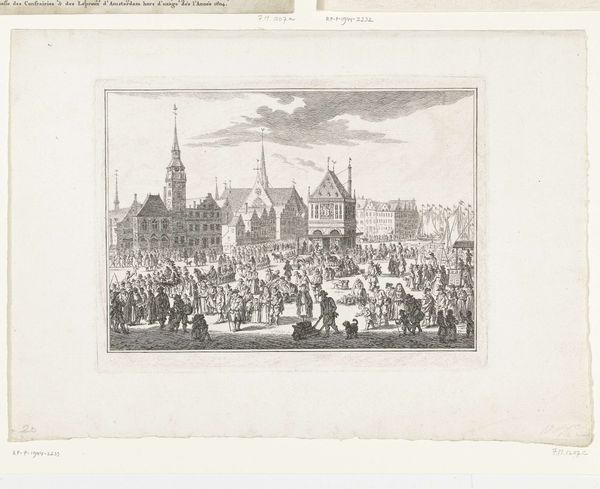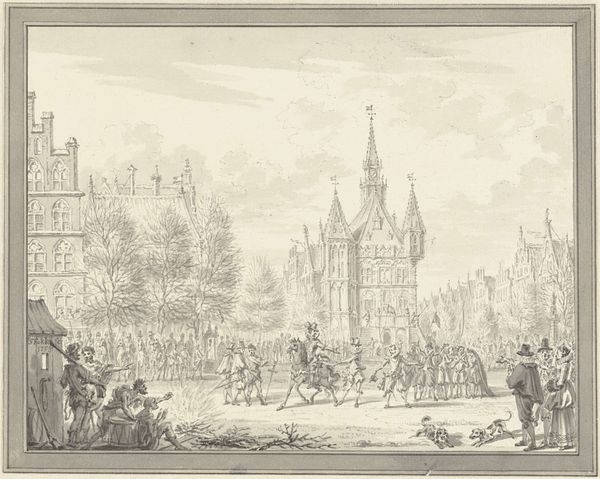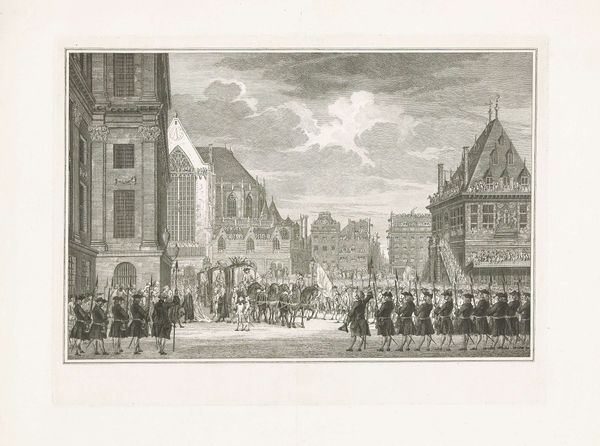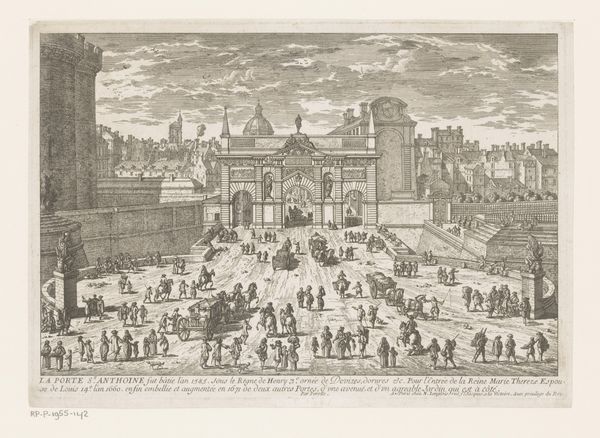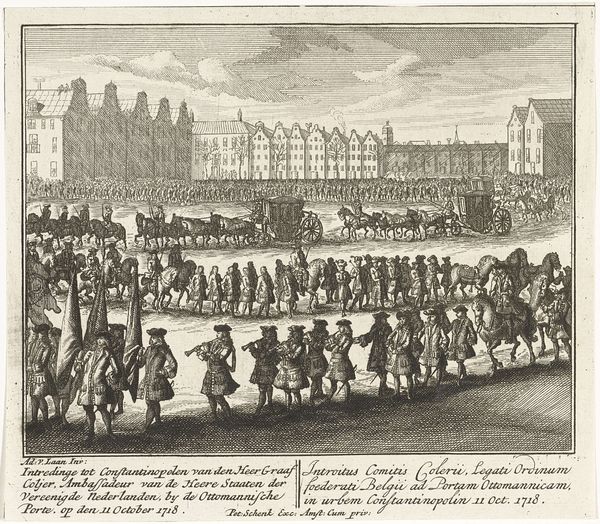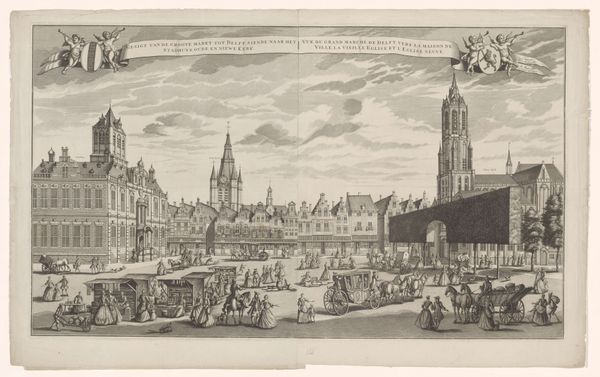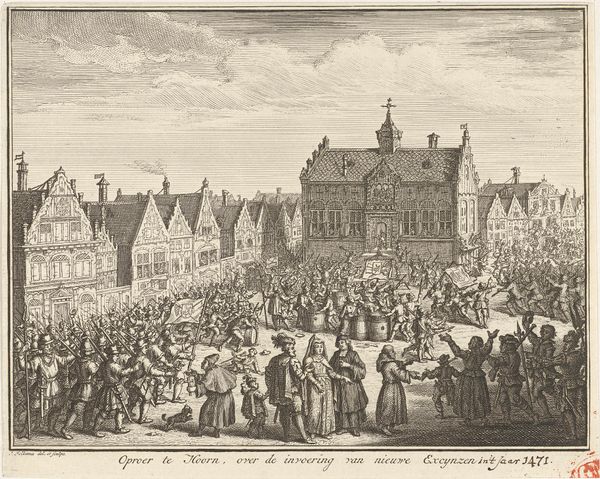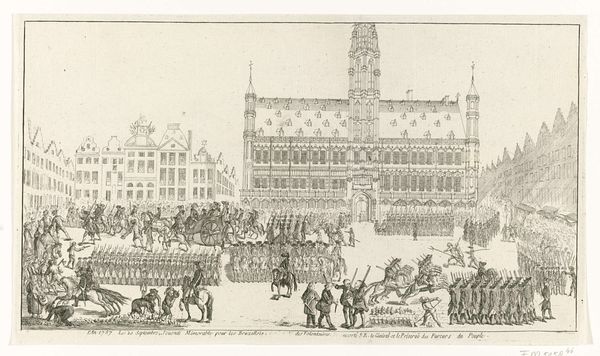
print, etching, paper, engraving
#
baroque
# print
#
etching
#
paper
#
cityscape
#
genre-painting
#
engraving
Dimensions: height 187 mm, width 293 mm
Copyright: Rijks Museum: Open Domain
Curator: This is a print from 1752 by Simon Fokke, titled "Funeral Procession of Willem IV in Delft." The Baroque style is evident in its elaborate detail and grandeur, but I wonder, what captures your attention? Editor: It's so detailed! The sheer number of people, the buildings, all rendered in etching and engraving on paper. It feels very... official, almost austere. What can we learn from such a depiction? Curator: Well, consider what a public spectacle like this communicates. Beyond mourning, it's a carefully staged performance of power. Willem IV's reign saw increasing centralization, so this procession solidifies the image of the Dutch stadtholder as a figurehead. How do you see the architecture contributing to that message? Editor: The imposing buildings, like the New Church, dwarf the figures. Is it implying that Willem IV and his dynasty have become inseparable from these established institutions, that his legacy will endure like stone? Curator: Precisely. Now, look closely at the people participating. What can we infer from their attire and arrangement within the procession? What roles do you imagine they played in 18th-century Dutch society? Editor: I see a lot of somber black clothing and what looks like official regalia. It makes me think about the rituals of power, and how carefully they reinforce existing social hierarchies. I hadn't considered how a seemingly straightforward depiction of a funeral could speak volumes about societal structures. Curator: Exactly! And Fokke, by creating this print, democratizes that image, allowing wider society to engage with that performance of power. So what's your feeling now? Editor: Now I’m not just seeing a historical event. I see an argument about legacy, power, and the role of the state. It's fascinating how much an image can reveal about the values and social structures of its time. Thank you!
Comments
No comments
Be the first to comment and join the conversation on the ultimate creative platform.
